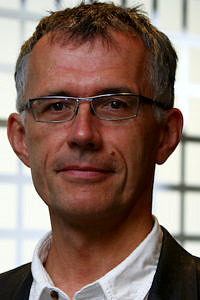Thierry Poinsot
Thierry Poinsot
Biography
Thierry Poinsot is a research director at IMFT CNRS, head of the CFD group at CERFACS, senior research fellow at Stanford University, consultant for various companies. His group has produced a significant part of recent research in the field of LES of turbulent combustion in gas turbines. He teaches numerical methods and combustion in many schools and universities (Ecole Centrale Paris, ENSEEIHT, ENSICA, Supaero, Stanford, Von Karmann Institute, Kanpur IIT, CEFRC Princeton and Beijing). He has authored more than 200 papers in refereed journals and 250 communications. He is the author of the textbook “Theoretical and numerical combustion” with Dr D. Veynante and the editor of «Combustion and Flame ». In 2017, he has received the Zeldovich Gold medal of the Combustion Institute. He also gave the prestigious Hottel plenary lecture at the last Symposium on Comb. in Seoul (2016).
Massively parallel simulation of instabilities in propulsion systems
Combustion produces more than 80 percent of the world energy. This will not change for a very long time as the global energy growth remains much larger than what new renewable energies can add to the present sources. Our civilization faces a daunting problem: allow the growth of combustion sources but, at the same time, keep global warming as well as pollution under control. The scientific community has a key role in this scenario: it must strive to optimize combustion systems far beyond the present state of the art. To achieve this objective, one promising path is to use High Performance Computation to allow to compute and optimize combustors before they are built. This talk will illustrate these efforts in the field of aerospace propulsion where optimization often leads to the occurrence of complex instabilities during which combustion couples with acoustics, leading to unacceptable oscillations of the whole reacting flow. The most famous example of such difficulties is the F1 engine of the Apollo project which required 1330 full scale tests in two years to reach acceptable oscillation levels. The talk will show how simulation (mostly Large Eddy Simulation but also Direct Numerical Simulation) is used to understand and mitigate these problems, both in real gas turbine engines and in rocket engines.
